Breaching Hurdles
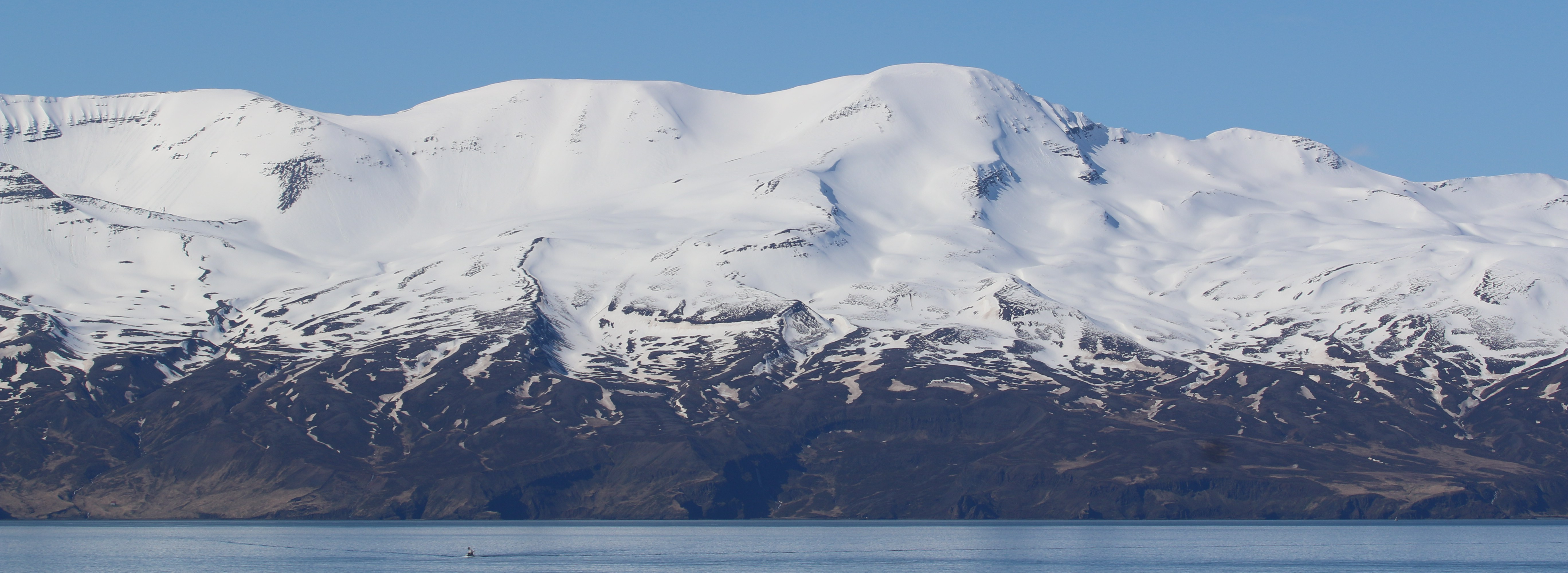
Our first week in Húsavík has certainly been eventful, with highs and lows, setbacks and celebrations. Having had no time to practise our research methods before arriving in Iceland, learning how to use equipment has been a big challenge. However, over the last week, we’ve developed protocols that allow us to collect the data necessary to meet the goals of Whale Wise. Most important of all: Skjálfandi Bay is full of whales, with some incredible sightings during the last few days.
At the moment, there are just two project members in Iceland: Tom Grove and Alyssa Stoller. Having spent the last two years working for different research groups, Tom has decided to pursue a career in marine mammal conservation; as such, he is starting a PhD at the University of Edinburgh in October, using the results of Whale Wise. Meanwhile, Alyssa worked as Head Research Assistant for the Centre for Cetacean Research and Conservation for the last two years. With a shared passion for marine conservation, Tom and Alyssa decided to start up Whale Watching Wisely in order to reduce the impact of human activity on whales and dolphins.
Even before arriving in Húsavík, the adventures started: driving across Iceland from Keflavík, we endured two massive blizzards in the mountains. With visibility less than 10 feet for hours at a time, we were lucky not to join the cars who had crashed off the road. Welcome to Iceland in May!
Once in Húsavík, we could get started on fieldwork. First lesson in cetacean science: expect setbacks, always. Despite spending the last few months preparing for this field season – designing research protocols, procuring equipment and getting advice from other researchers – there is no substitute for experience and practice. Some of our proposed methods needed tweaking (or radically changing…), and we have come to realise how difficult it can be to observe groups of whales. Which whale is which? Should we just focus on one whale? How to record the average location of a group? These conundrums will continue to resolve themselves during the next weeks. However, we now have a fairly solid plan for our behavioural observation:
- In order to monitor the response of whales to whale watching vessels, we need to track the identity, location and behaviour of each whale followed and every boat in the vicinity.
- Onboard whale watching vessels, we use a camera and rangefinder to deduce the exact location of whales relative to vessels. Voice recorders are used to document whale behaviour and research progress.
- From land, we use a theodolite to track whale behaviour and movement patterns in the absence of whale watching vessels, acting as our control data.
- Finally, we will combine these control and impact data to analyse the impact of whale watching vessels on activity patterns. Hopefully, from this we can estimate the impact on population dynamics.
Whilst behavioural monitoring will be our main focus over the next few weeks, this is by no means the extent of our project. In particular, in June we will attempt to use drones to collect blow samples (exhaled breath) from humpback and blue whales, in order to measure the levels of stress-related hormones. We’ll go into more detail about this research over the next few weeks.
Luckily for us, there have been whales aplenty to study. After a few rough days, we have been treated to glassy calm waters, allowing us to watch whales resting, feeding and even breaching! With so many whales in the bay, they often gather in feeding groups, with 5 seen swimming together yesterday. Apparently, there is no cooperative feeding in the bay, but the synchrony of their surfacing makes you wonder. Perhaps the highlight of the week was an inquisitive minke whale: normally known for their shy nature, one adult spent 30 minutes circling the boat, making bubbles and taking peeks at us… humans watching whales or whales watching humans?
Hopefully the next week will provide us with equally incredible encounters- as long as they are seen without disturbing the whales we love to watch.
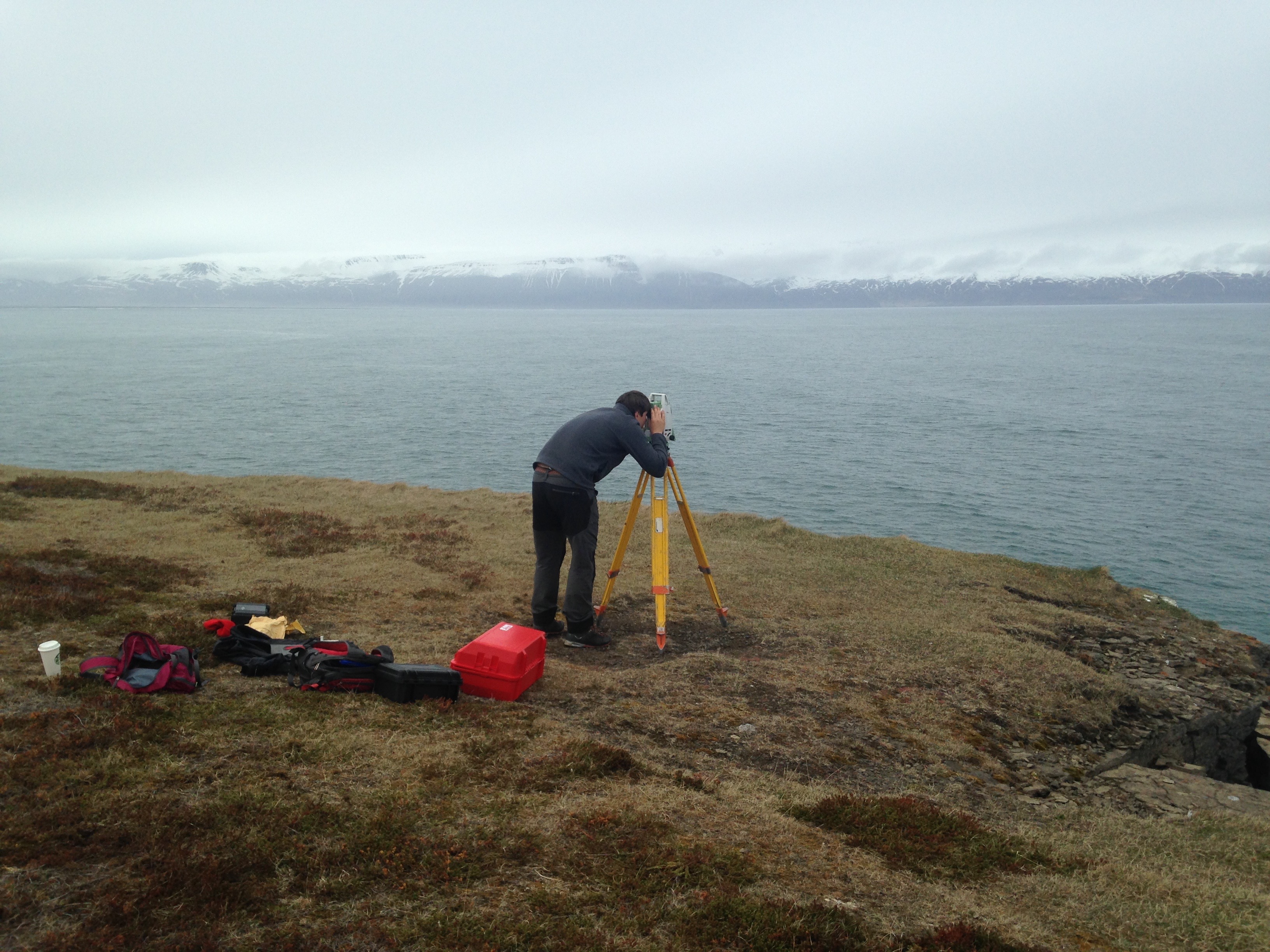 Tom capturing whales with the theodolite
Tom capturing whales with the theodolite
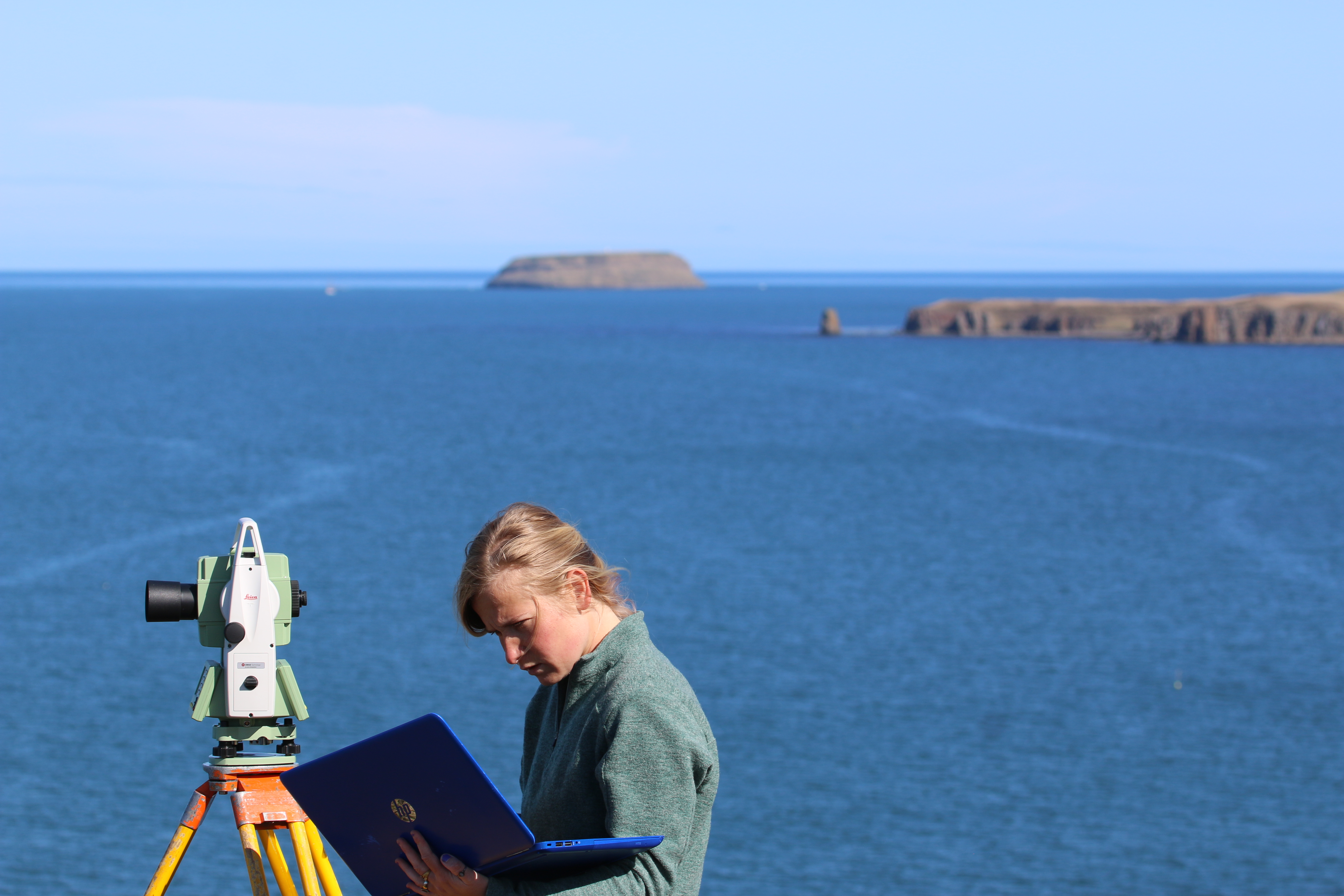
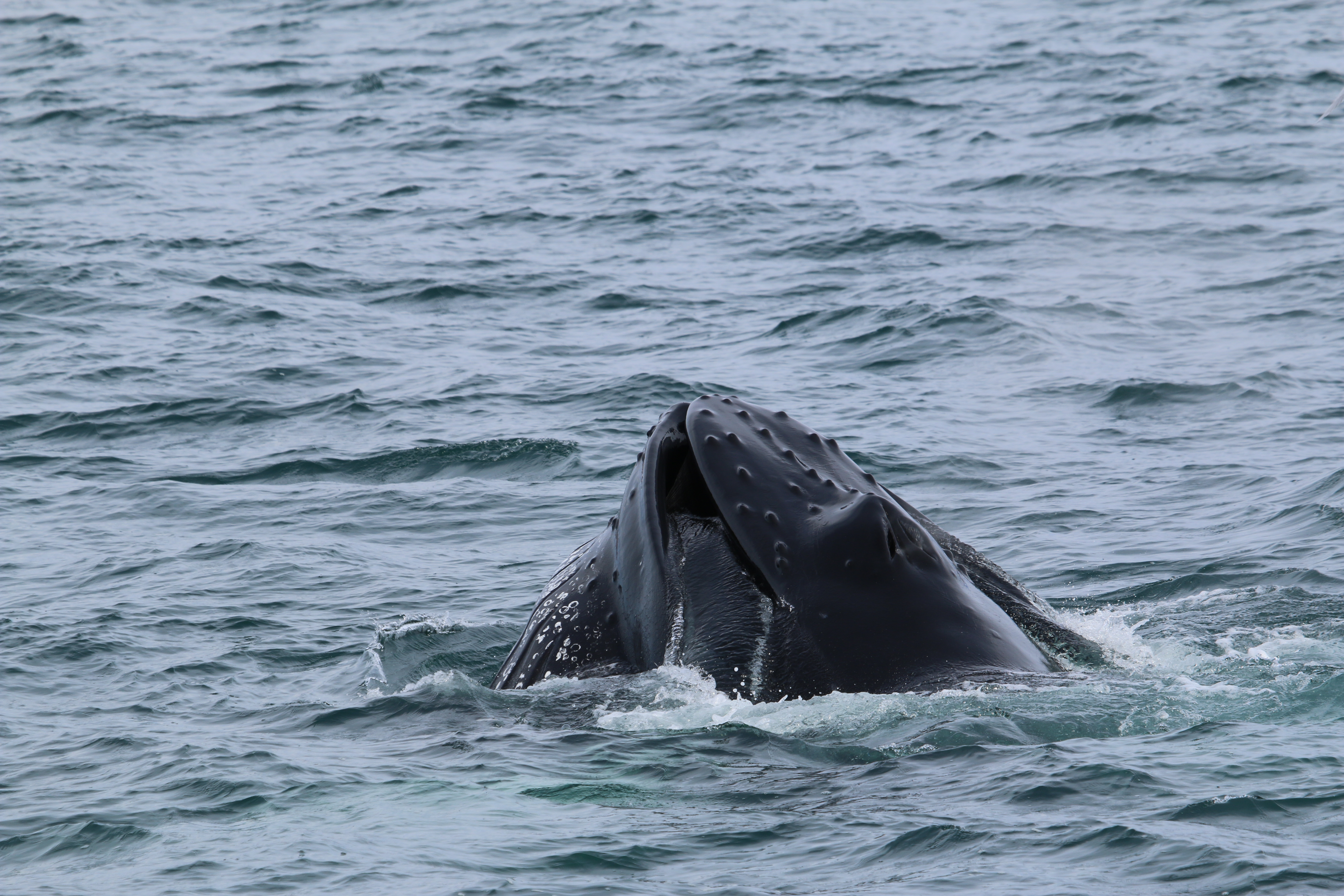
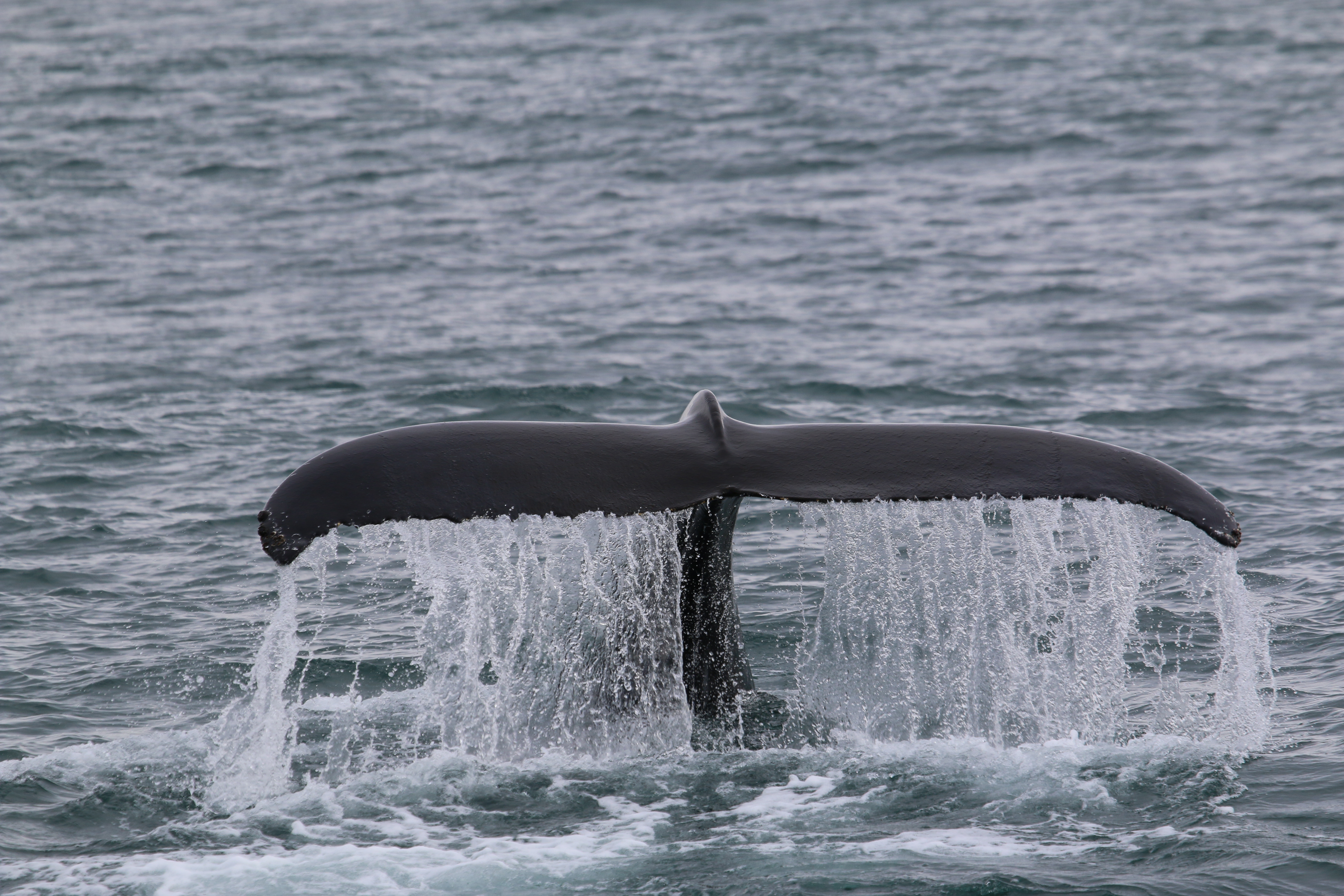
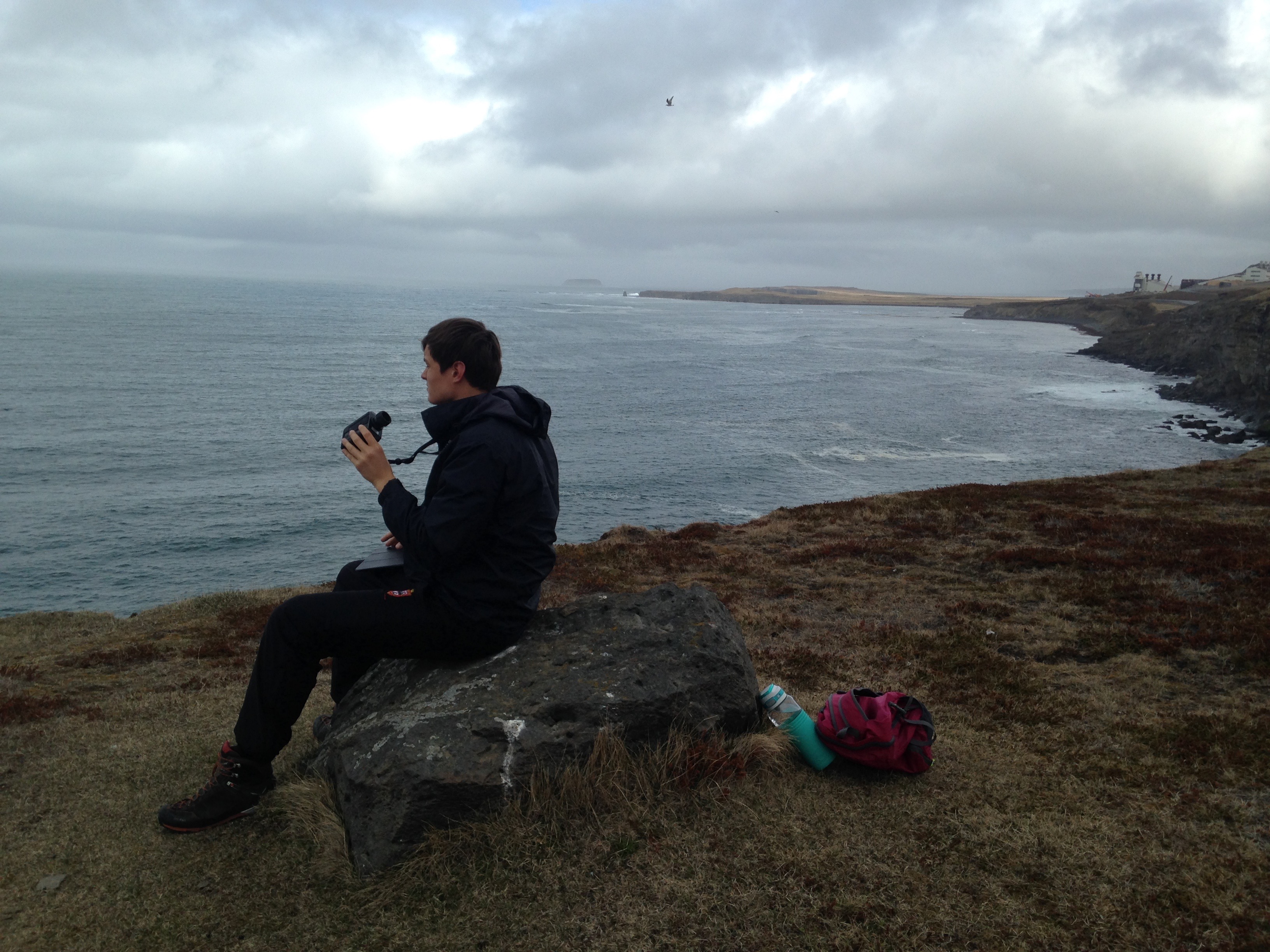 Tom using the range finder
Tom using the range finder
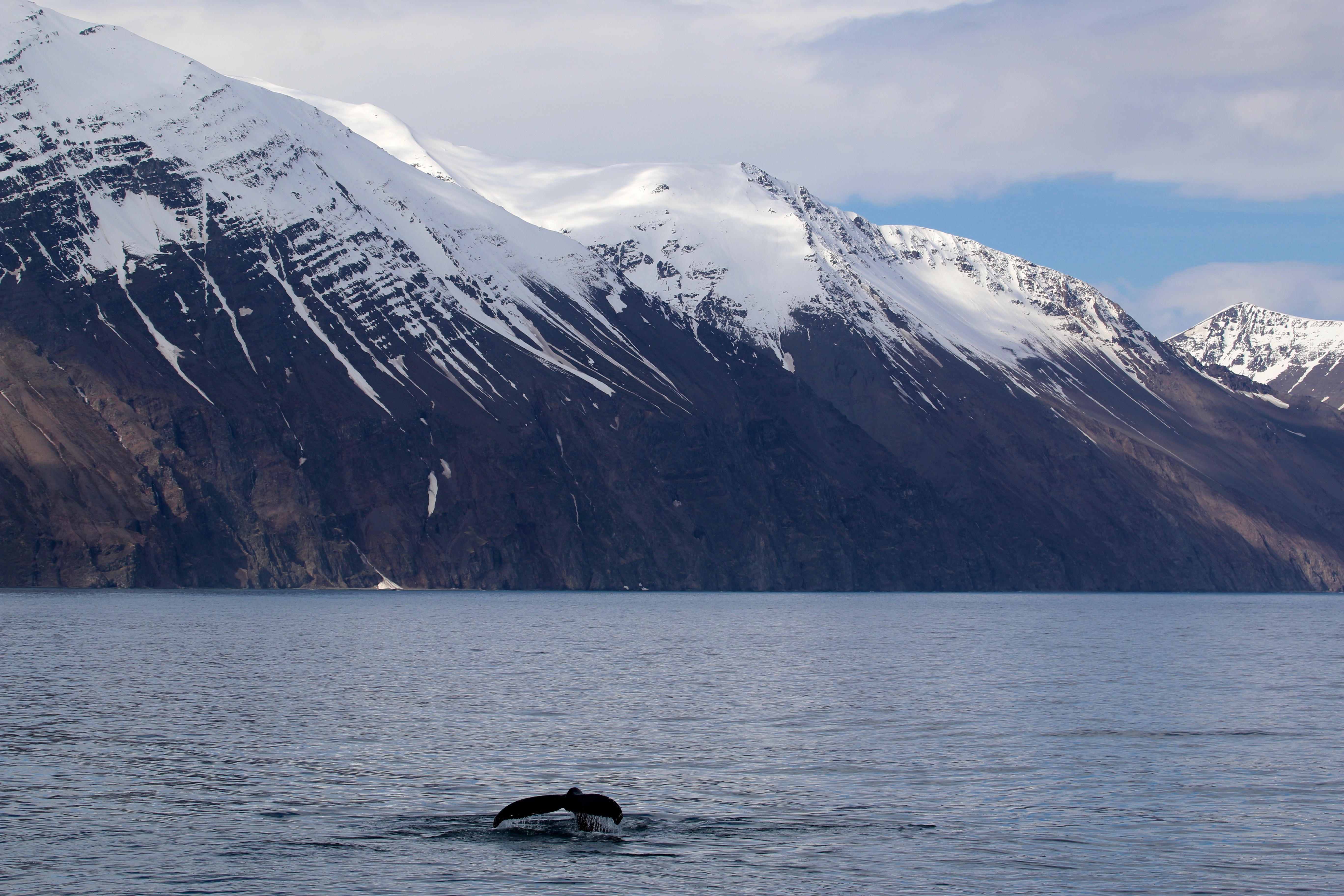
Diving down below the beautiful mountains
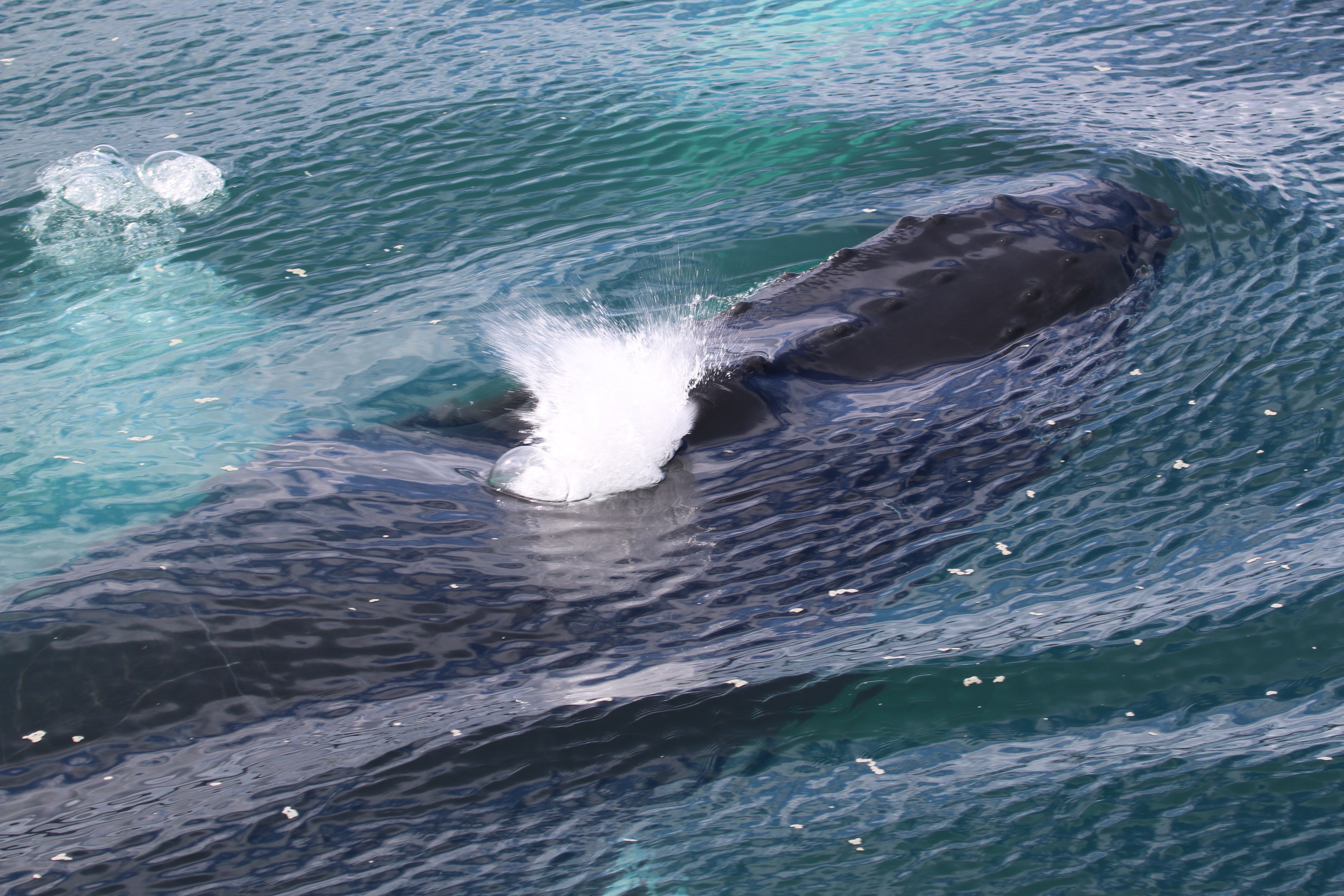
A powerful blow right next to the boat
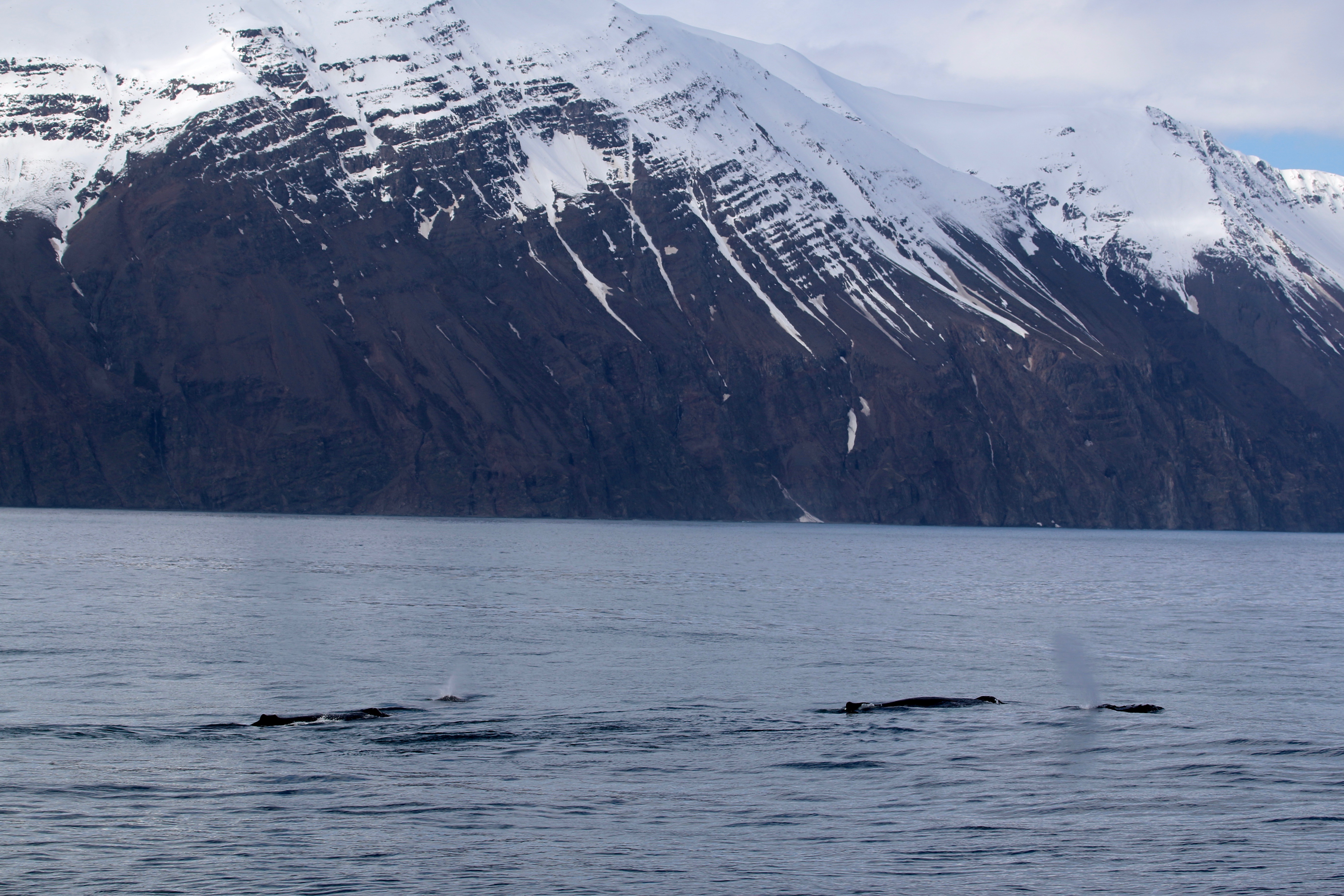 Group of five whales at the surface
Group of five whales at the surface
 Whale Wise
Whale Wise 